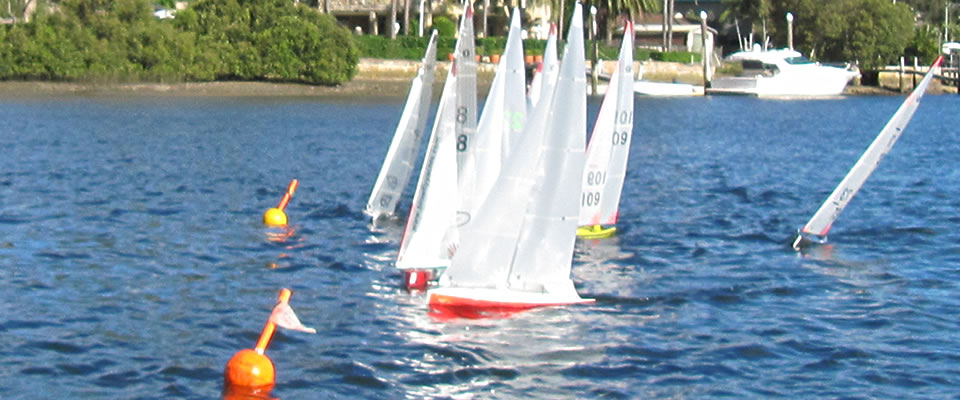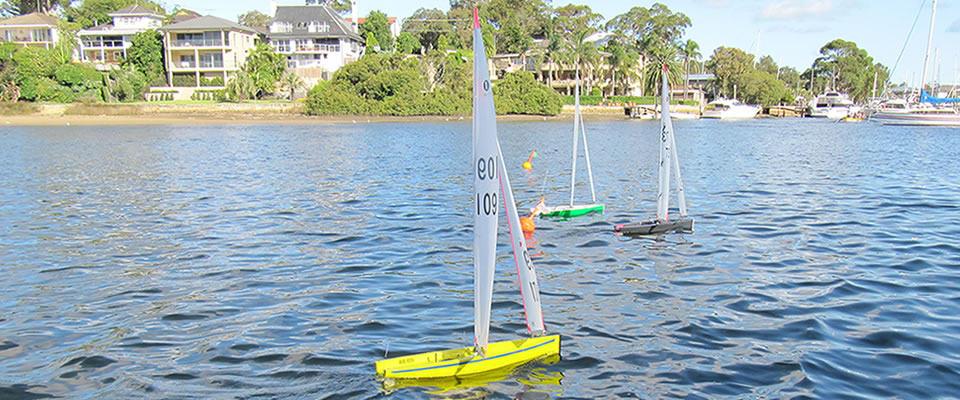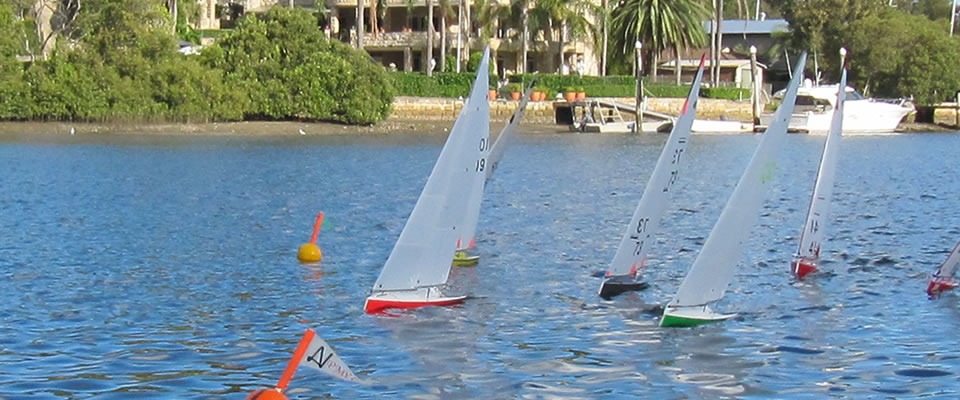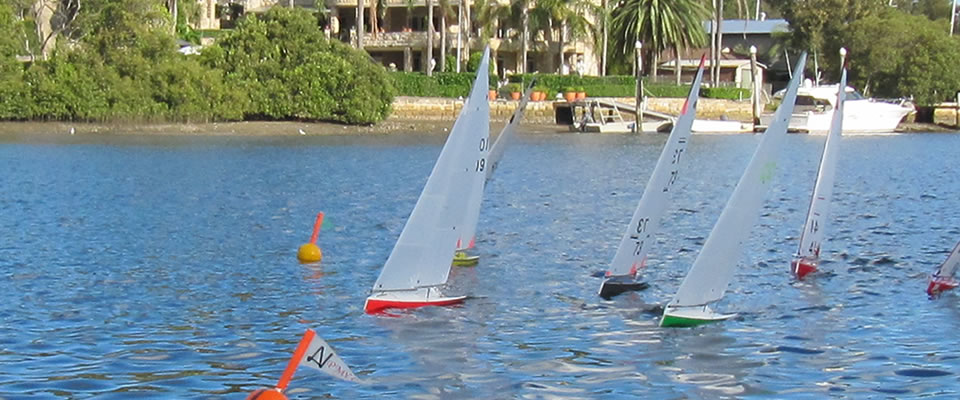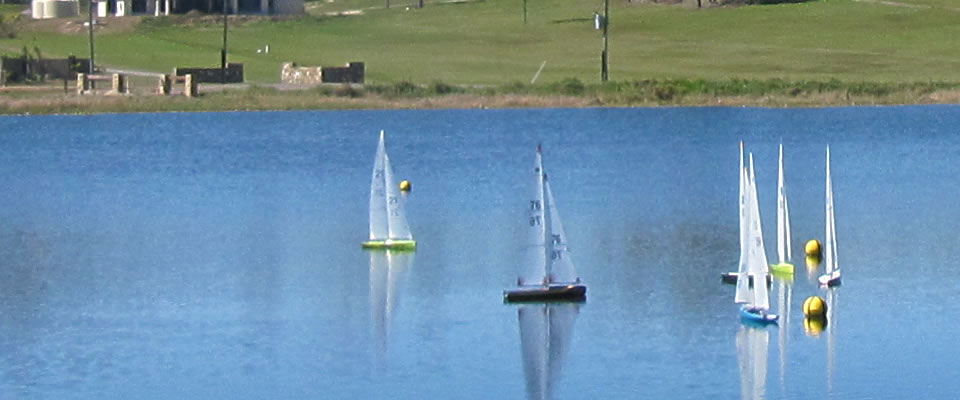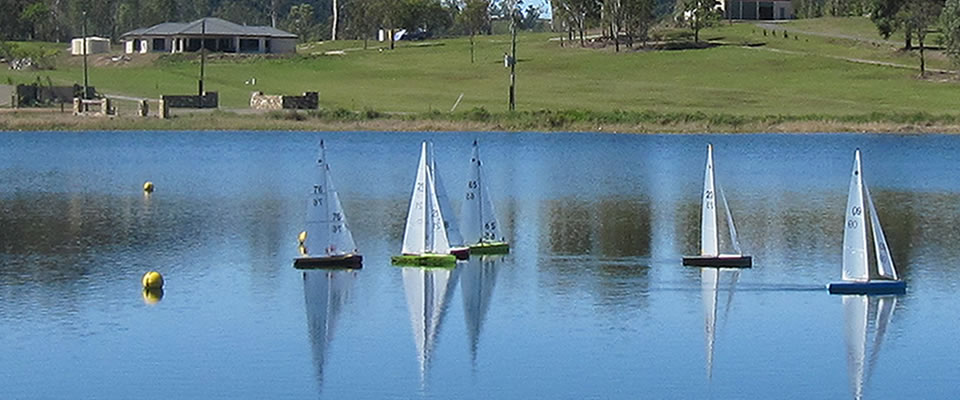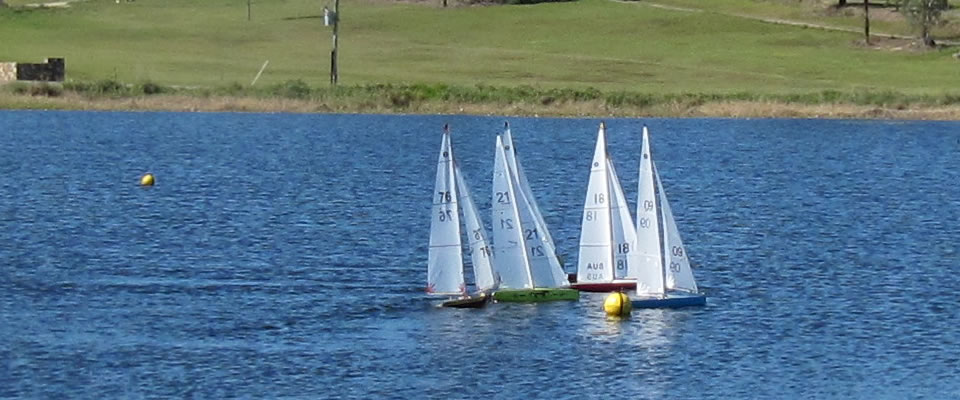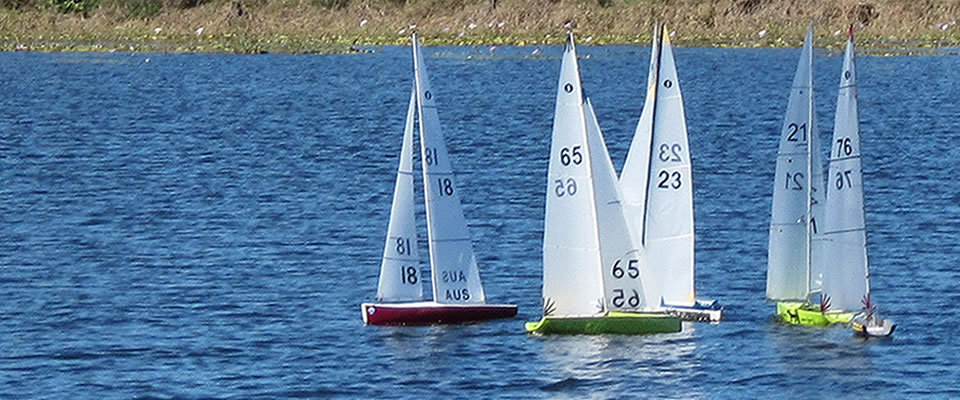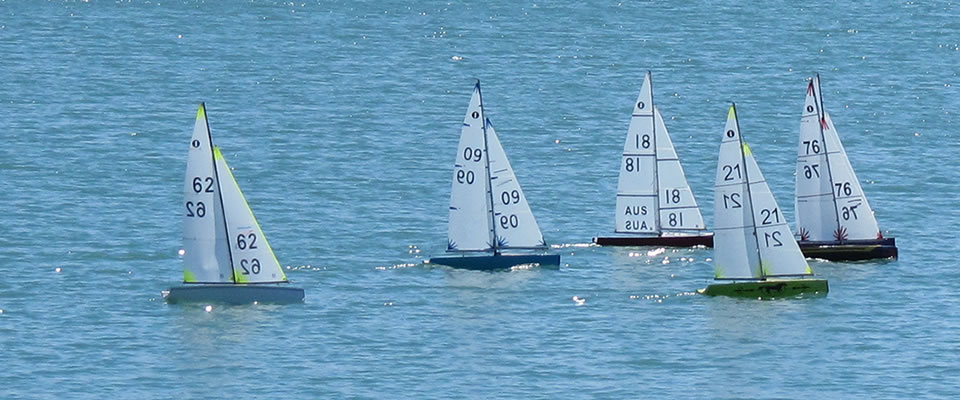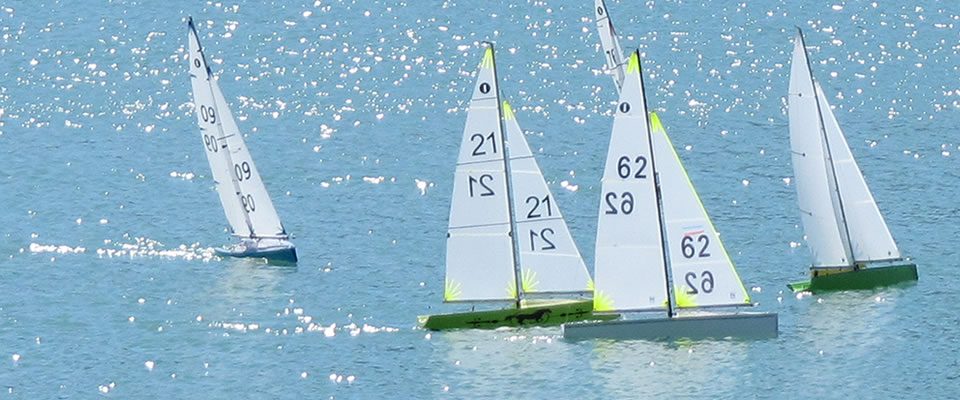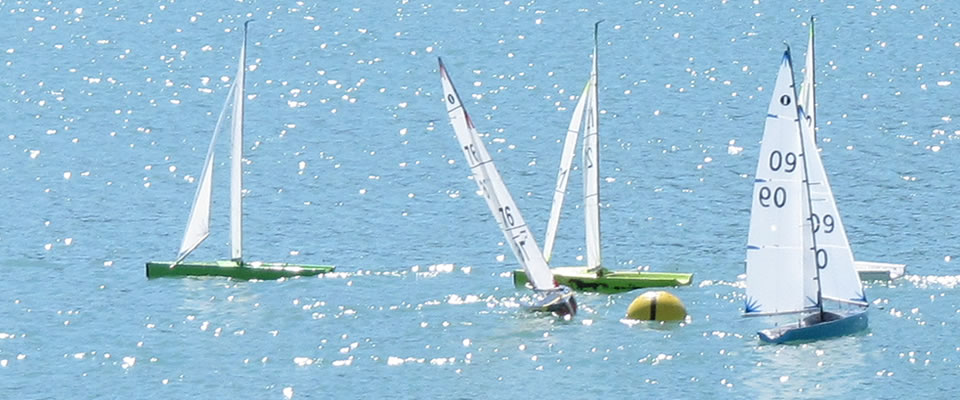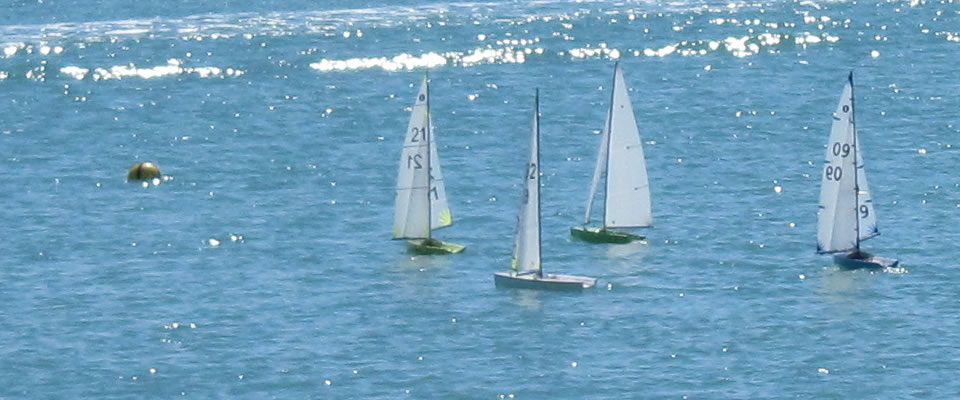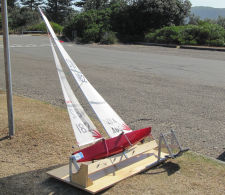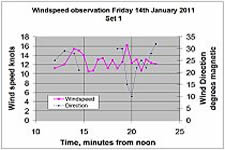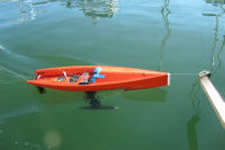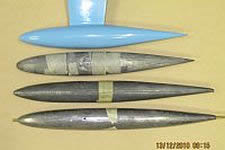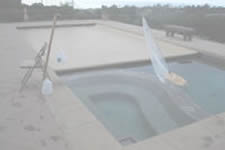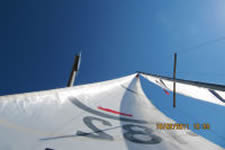Prebend and Sail Shape
In IOM’s it has become commonplace to pre-bend a top portion of mast forward so that when the masthead is pulled aft with the backstay to suit the cut of the sail, a greater forestay tension is produced than could be done otherwise
Although the primary job of the pre-bend is to increase the forestay tension, it does, together with the check-stay/mast ram and spreader set up, set the sailing shape of the mast and hence the sail shapes.
For some time, a pre-bend offset (Δ in the Geek Box) of around 40mm was used, however both this, and the length of mast section prebent, has been progressively reduced by most IOM sail makers. The result is that many club sailors find that when they but new or near new sails these will not fit happily on their old rigs. If the maker of the sails will reveal what prebent is required, well and good. It is just a matter of rebending the mast.to that specification.
Changing the bend in the mast is not difficult, the most important thing to remember is that the bend MUST be only fore and aft. I put the spreaders in so that I can make sure of this. Some just use their hands, but more often the rebending is done over a round object. A car tire is good and often used: you place the mast on the flattest part in the middle, check the spreaders are horizontal and the gooseneck vertical then press down either side of the point of contact. Start off gently until you get used to how it all works. If this all looks too uncontrolled for you, a jig can be made like Figure 1.
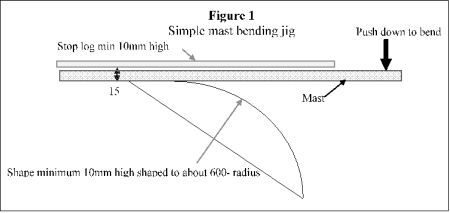
On the other hand, if this information is not available, all is not lost! As the backstay is tensioned to pull the mast to its sailing shape the mast goes through some rather odd S bends, and the final shape is determined by how far it is pulled and by the mast ram setting, the spreader length and angle, and the shroud tension. Of course the final mast shape affects the sail shape. If the shape is not right then it is possible to vary the sail fullness throughout most of the sail by changing the shape of the pre-bend. This depends on two factors:
- Parts of the mast that are bent to a tighter radius on the pre-bend tend to become relatively straight once the backstay is tensioned. Conversely, parts of the mast that are relatively straight become more curved as the backstay is tightened. 2) The sail is flattened where the mast takes up a tighter radius with the backstay on. Conversely the sail will become fuller in sections of the mast that become relatively straight with the backstay on.
This can be useful. My first attempt at a B rig had too much fullness near the head and, because the mast was a rather floppy tube section, tended to get a nasty over-flat shape near the spreaders with creases to the clew. No amount of mast ram stopped this and initially resort was had to bending the spreaders forwards, which still left the head too full.
The pre-bend was changed by straightening the top section and putting in a tighter bend just above the spreaders. The total amount of pre-bend as measured by the tip deflection from the line of the mast below the spreaders (25mm) was kept the same. This fixed all the problems and the spreaders could be put back to a more normal angle.
As another example, I recently bought a second hand boat with a very nice mainsail but with a mast that was clearly wrong. The sail was far too full in the mid-height region. On inspection there was considerable pre-bend in this area, so that when the backstay was tensioned this part of the mast was actually bend slightly backwards! By removing the pre-bend from this mid-height area, the whole sail looked very nice when the backstay was tensioned, though it took a couple of goes before it was right.
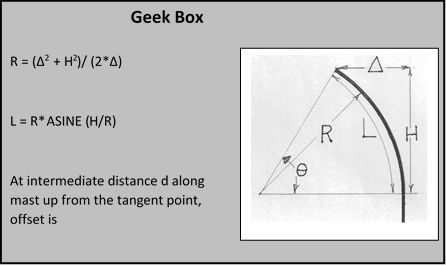 Some people like to set templates for a uniform radius for prebends. For the old 40mm at the tip, a full height bend from spreaders to the upper point implies a radius of 13.525m. Scott Berry says for the Blowfly the bend should be only from the spreaders to the band above the forestay point, which requires a radius of 12.9m. These calculations allow for the difference between H and L in the Geek Box. The difference is small and ignoring this difference changes the offsets by less than 0.1mm.
Some people like to set templates for a uniform radius for prebends. For the old 40mm at the tip, a full height bend from spreaders to the upper point implies a radius of 13.525m. Scott Berry says for the Blowfly the bend should be only from the spreaders to the band above the forestay point, which requires a radius of 12.9m. These calculations allow for the difference between H and L in the Geek Box. The difference is small and ignoring this difference changes the offsets by less than 0.1mm.
Most modern rigs use smaller prebends. If you are keen, the Geek Box shows how to calculate the offsets for a template for any given radius or start point.
Colin Thorne April 2010, rev May 2013
